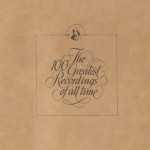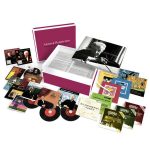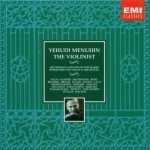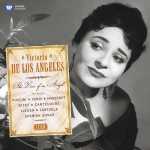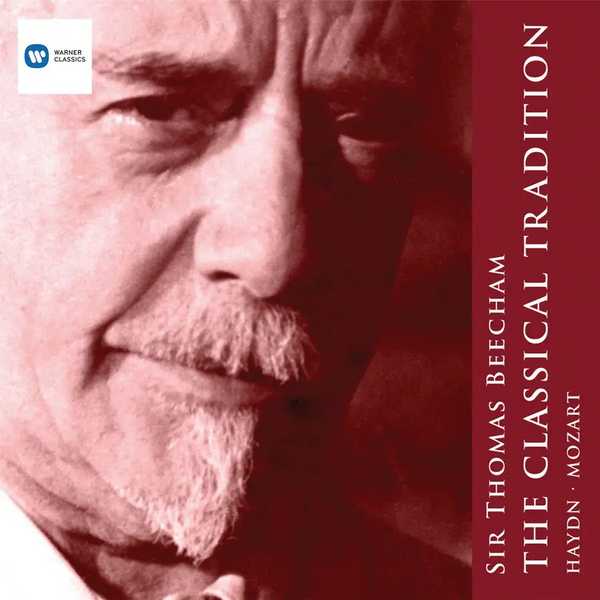
Composer: Franz Joseph Haydn, Wolfgang Amadeus Mozart
Orchestra: Royal Philharmonic Orchestra, London Philharmonic Orchestra
Conductor: Sir Thomas Beecham
Number of Discs: 10
Format: FLAC (tracks)
Label: Warner
Catalogue: 9099462
Release: 2011
Size: 2.91 GB
Recovery: +3%
Scan: cover
CD 01
Haydn: Symphony No. 93 in D major
01. I. Adagio – Allegro assai
02. II. Largo cantabile
03. III. Menuet (Allegro) & Trio
04. IV. Finale (Presto ma non troppo)
Haydn: Symphony No. 94 in G Major ‘Surprise’
05. I. Adagio cantabile – Vivace assai
06. II. Andante
07. III. Menuetto (Allegro molto) & Trio
08. IV. Allegro di molto
Haydn: Symphony No. 95 in C minor
09. I. Allegro moderato
10. II. Andante
11. III. Menuetto & Trio
12. IV. Finale (Vivace)
CD 02
Haydn: Symphony No. 96 in D major ‘Miracle’
01. I. Adagio – Allegro
02. II. Andante
03. III. Menuetto (Allegretto)
04. IV. Finale (Vivace (assai))
Haydn: Symphony No. 97 in C major
05. I. Adagio – Vivace
06. II. Adagio ma non troppo
07. III. Menuetto (Allegretto)
08. IV. Finale (Presto assai)
Haydn: Symphony No. 98 in B flat major
09. I. Adagio – Allegro
10. II. Adagio
11. III. Menuet (Allegro) and Trio
12. IV. Finale (Presto)
CD 03
Haydn: Symphony No. 99 in E flat major
01. I. Adagio – Vivace assai
02. II. Adagio
03. III. Minuet (Allegretto) & Trio
04. IV. Vivace
Haydn: Symphony No. 100 in G major ‘Military’
05. I. Adagio – Allegro
06. II. Allegretto
07. III. Menuet (Moderato) – Trio
08. IV. Finale: Presto
Haydn: Symphony No. 103 in E flat major ‘Drum Roll’
09. I. Adagio – Allegro
10. II. Andante più tosto allegretto
11. III. Menuetto
12. IV. Finale: Allegro con spirito
CD 04
Haydn: Symphony No. 101 in D major ‘The Clock’
01. I. Adagio – Presto
02. II. Andante
03. III. Menuet (Allegretto) & Trio
04. IV. Vivace
Haydn: Symphony No. 102 in B flat major
05. I. Largo – Allegro vivace
06. II. Adagio
07. III. Menuetto (Allegro) and Trio
08. IV. Finale: Presto
Haydn: Symphony No. 104 in D major ‘London’
09. I. Adagio – Allegro
10. II. Andante
11. III. Menuet
12. IV. Spiritoso
CD 05
Haydn: The Seasons: Spring
01. Overture
02. Recitative: O see where cruel Winter flies
03. Chorus: Come, gentle Spring!
04. Recitative: From Aries rolls at last the bounteous sun
05. Air: Now fairly runs the farmer’s boy
06. Recitative: The farmer has his work achieved
07. Trio and chorus: Be now gracious, smiling heaven!
08. Recitative: Now heard are all our prayers
09. Trio and Chorus: O how lovely gleams the outlook
10. Chorus and Trio: Ageless! Powerful! Bountiful God!
Haydn: The Seasons: Summer
11. Recitative: In dove-grey mantle drawing near
12. Air: The lively swain is gath’ring now his happy flocks
13. Recitative: The rosy morning breaks forth
14. Trio and Chorus: He’s mounting up, the Sun
15. Recitative: Now all are a stir
16. Recitative: The midday sun is burning now
17. Cavatina: Oppress’d succumbs all Nature now
18. Recitative: Oh welcome now, you shadier grove
19. Air: So reviving to the senses
20. Recitative: Oh see! Now rising in the sultry air
21. Chorus: Hark the tempset drawing night
22. Trio and Chorus: The gloomy clouds now part aside
CD 06
Haydn: The Seasons: Autumn
01. Overture
02. Recitative: All that through her blossom fair Spring
03. Trio and Chorus: So Nature gives reward to Zeal
04. Recitative: Now see! To hazel bushes there the youngsters
05. Duet: You beauties of the town
06. Recitative: Now see, on new-stripp’d harvest field
07. Air: There look across the open fields!
08. Recitative: Here beaters, closing in, put up the hares
09. Chorus: Hark! The clamorous noise that through the wood
10. Recitative: On all the vines are glist’ning
11. Chorus: Cheer now! The wine is here
Haydn: The Seasons: Winter
12. Introduction
13. Recitative: Now sinks the pale declining year
14. Cavatina: Light and life are both enfeeled
15. Recitative: All fetter’d lies the open lake
16. Air: Here stands the wand’rer now
17. Recitative: At his approach rings in his ear
18. Song and Chorus: Purring, whirring, purring
19. Recitative: The flax has now been spun
20. Song and Chorus: A maid who kept her honour fair
21. Recitative: From barren East now thrust far keener icy blasts
22. Air: Before thee here, deluded man
23. Recitative: Remains, alone, and is our guide
24. Trio and Chorus: Then breaks the glorious day at last
CD 07
Mozart: Symphony No. 29 in A major, K201
01. I. Allegro moderato
02. II. Andante
03. III. Menuetto & Trio
04. IV. Allegro con spirito
Mozart: Symphony No. 31 in D, K297 ‘Paris’
05. I. Allegro assai
06. II. Andante
07. III. Allegro
Mozart: Symphony No. 34 in C major, K338
08. I. Allegro vivace
09. II. Andante di molto
10. III. Finale (Allegro vivace)
Mozart: Le nozze di Figaro, K492
11. Overture
Mozart: Don Giovanni, K527
12. Overture
CD 08
Mozart: Symphony No. 35 in D major, K385 ‘Haffner’
01. I. Allegro con spirito
02. II. Andante
03. III. Menuetto & Trio
04. IV. Presto
Mozart: Symphony No. 36 in C major, K425 ‘Linz’
05. I. Adagio – Allegro spiritoso
06. II. Andante
07. III. Menuetto & Trio
08. IV. Presto
Mozart: Symphony No. 38 in D major, K504 ‘Prague’
09. I. Adagio – Allegro
10. II. Andante
11. III. Presto
CD 09
Mozart: Symphony No. 39 in E flat major, K543
01. I. Adagio – Allegro
02. II. Andante con moto
03. III. Menuetto & Trio
04. IV. Allegro
Mozart: Symphony No. 40 in G minor, K550
05. I. Molto allegro
06. II. Andante
07. III. Menuetto & Trio
08. IV. Presto
Mozart: Symphony No. 41 in C major, K551 ‘Jupiter’
09. I. Allegro vivace
10. II. Andante cantabile
11. III. Menuetto (Allegretto) & Trio
12. IV. Molto allegro
CD 10
Mozart: Thamos, König in Ägypten K345
01. Intermezzo No 2
02. Mozart: March in D, K249
Mozart: Divertimento in D major, K131
03. I. Allegro
04. II. Adagio
05. IV. Allegretto
06. V. Minuet – Trio I – Trio II – Coda
07. VI. Adagio – Allegro molto – Allegro assai
Mozart: Divertimento No.15 in B flat major K247
08. II. Theme & Variations
09. III. Minuet
Mozart: Violin Concerto No. 3 in G major, K216
10. I. Allegro (cadenza: Sir Donald Tovey)
11. II. Adagio
12. III. Rondeau (Allegro – Andante – Allegretto)
sir-thomas-beecham-the-classical-tradition-02.rar – 302.8 MB
sir-thomas-beecham-the-classical-tradition-03.rar – 337.5 MB
sir-thomas-beecham-the-classical-tradition-04.rar – 348.3 MB
sir-thomas-beecham-the-classical-tradition-05.rar – 396.0 MB
sir-thomas-beecham-the-classical-tradition-06.rar – 396.3 MB
sir-thomas-beecham-the-classical-tradition-07.rar – 250.9 MB
sir-thomas-beecham-the-classical-tradition-08.rar – 249.9 MB
sir-thomas-beecham-the-classical-tradition-09.rar – 269.1 MB
sir-thomas-beecham-the-classical-tradition-10.rar – 247.0 MB
There can be few, if any, musicians who have singlehandedly done so much in the establishment of resources for musical performance than Sir Thomas Beecham.
During WWI he conducted and supported financially both the Hallé and London Symphony Orchestras and the Royal Philharmonic Society. In 1915 he formed the Beecham Opera Company which trained many young British singers in this field. Eight years later this became the British National Opera Company and was absorbed into Covent Garden in 1932 when Beecham returned to be its Musical Director.
To quote David Cairns “We are nationally and individually a more musically aware people because of him and what he gave us”. A forceful statement, true, but whose life could ever challenge it?
Dissatisfied by conditions and practices, notably the supply of deputies for rehearsals, prevalent in British orchestras, he formed the London Philharmonic Orchestra that same year. Beecham was now able to be at the fulcrum of all developments in music in Britain. WWII put an end to this halcyon period. With Covent Garden shut he travelled, primarily in America, and did not return to Britain until 1944. The London Philharmonic had now become a self-governing body so Beecham, then aged 67, launched the Royal Philharmonic Orchestra. This was the orchestra with which he committed to disc so many classic recordings with which EMI Classics marks the 50th anniversary of his passing.
It is true that Beecham had particular favourites in composers – Haydn, Mozart, Schubert, Berlioz, Bizet and Puccini spring immediately to mind; also his love for Handel – even though his performances were always BIG-scale! He was an early champion of Richard Strauss and became a most effective exponent of Sibelius. His name will always be inextricably linked with that of Delius whose music Beecham seemed to know better even than the composer and it is appropriate that they are buried not far apart in the graveyard at St. Peter’s Parish Church, Limpsfield, Surrey.
He was knighted in 1916, the year he succeeded to his father’s baronetcy, and made a Companion of Honour in 1957.This affable, brilliant, usually charming, ever-communicative, quick-witted – even, at times, to the point of cruelty, dedicated conductor was also the most gifted executive musician England has ever produced.
He was fortunate that his grandfather, a chemist, had created the highly successful pharmaceutical manufacturing business which bore his name. His father, who had started in the company whilst still a teenager, was also fond of music so he was prepared to fund his son’s enthusiastic appetite to attend operas and concerts both here and abroad.
Born on 29th April 1879 in St. Helens, he attended public school at Rossall where his talent at the piano became a legend (the only boy ever to have been allowed a grand piano in his study!). From there he briefly attended Oxford (Wadham) but the composition classes, with Charles Wood in London and Moszkowski in Paris, were funded privately. As a conductor he was purely self-taught.
He formed an orchestra in his home town and deputised for Richter at a Hallé concert when his father was mayor. His career path was clear: he would use his financial resources to support the art which he enjoyed with the aim of bringing it to as many as possible.
At the age of 30 he launched the Beecham Symphony Orchestra, all young and carefully chosen. They would tour, play for opera and ballet and give concerts of adventurous music. London duly welcomed him for a season of intensive opera performances and over the next three years introduced many new ones to British audiences, including by Strauss, Delius and the Russians. He also brought Diaghilev’s Ballets Russes starring Nijinsky and Karsavina to the British stage.
